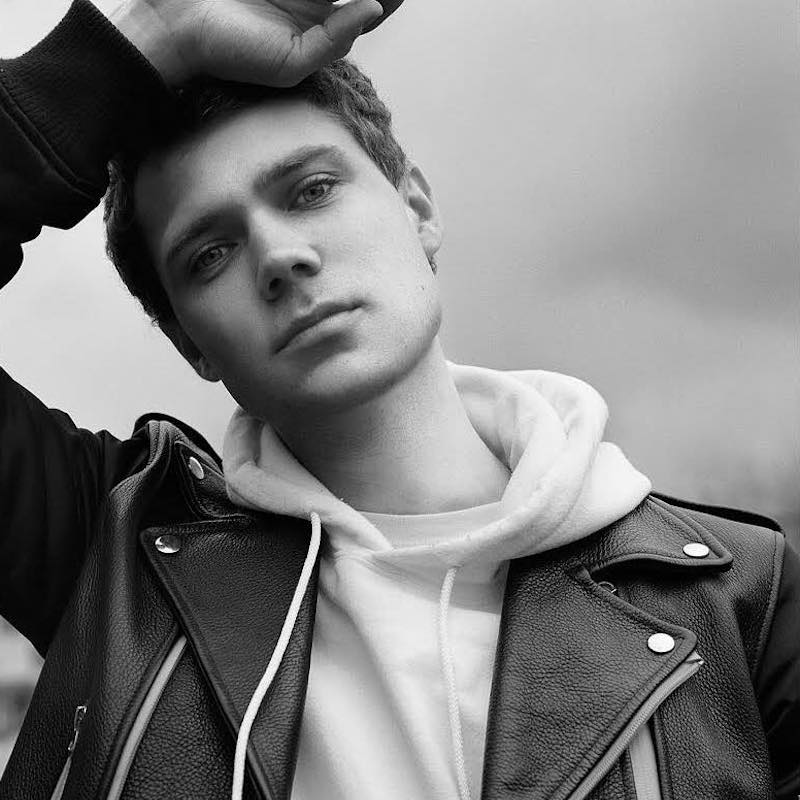Freddie Smithson
Senior Creative + Strategic Lead @Freddiemade
The Olsens on Segways, Britney for Nike, and QE2 taking a mirror selfie in head-to-toe Vetements. It’s all from the imagination of Freddie Smithson, alias @freddiemade, and it’s coming to an Instagram near you.
When Freddie isn’t honing his side hustle or being lauded by the great and good of fashion for his genius, surreal take on the industry, he’s applying his killer eye to the role of Conceptual Art Director at Cult LDN, working with brands from Marc Jacobs to Farfetch.
If Freddie isn’t a #CreativeAchiever we don’t know who is. Here’s how he got to where he is today.
Where does your interest in fashion and luxury stem from?
A difficult question to answer, as there have been so many influences! I think my interest began growing up as an only child within a single parent household, I was always looking for a way to express myself and communicate with the outer world, which I think I fast discovered as a teenager I was able to do via fashion. As I grew older my interest and knowledge of the fashion industry only grew stronger.
I’ve always viewed the fashion industry with big thoughts and ideas, but from a working class point of view, which I think makes my perspective more unique. My interest escalated further at university when I realised how much of an impact what I wore had on my mood for the day. Depending on who you are, how you dress can really impact your psychological well-being in such a positive way, which connected with my Graphic Communication studies at Bath School of Art, so my interest in a career in fashion was born from there.
What was your first job in industry? How do you think it helped to shape where you are now?
I began my career in the industry working as an intern in the digital department at House of Holland. I worked my way up during my time at the brand, eventually becoming assistant to the Head of Digital and Social. My role involved concepting, designing and creating content for the fashion house on a daily basis. This coincided with the huge initial growth of Instagram, which helped me apply my previously abstract thinking to a commercial brand that wanted to have fun and experiment with new approaches.
House of Holland played a serious part in shaping where I am today, the IDGAF attitude brand has gave me a lot of freedom to experiment with my approach and opened my mind to the kind of thinking that I think more brands should embrace. That free thinking and communication is something I think is unique, and often lacking amongst brands still to this day.
Tell us a bit about your role at the moment?
I moved from House of Holland to the agency Cult LDN where I am a Conceptual Art Director. Deciding to join an independent creative agency like Cult has offered me the opportunity to expand my creativity and apply a broader conceptual approach to the work I produce. Cult is somewhere I am fortunate enough to be able to work across multiple brands, indulging in a cross-section of sectors, with a focus on fashion, luxury, and beauty.
Cult is independently run by two successful and empowering women who founded the agency five years ago. Their collective thought is that in order to create strong and strategic work, we should be BRAVE in our approach to ideas. That’s something that seriously resonated with me; a thinking that's now always at the forefront of my mind. When pitching we always ask ourselves: ‘But is this CULT?!’
How do you get under the skin of the brands you work with?
I always find it so important that I form relationships with the people I’m working with. It’s important to try and truly understand where they’re from and what they’re looking for.
Do you think fashion needs more of a sense of humour?
If you asked me this four years ago when I started producing collages, animations and eventually memes, I’d have told you that the fashion industry needed a kick up the arse and to not take everything too seriously. Luxury fashion, especially for my millennial age range, often felt dated and not something you’d be that concerned about saving for, never mind splurging £500 on at 24hours notice.
Flash forward a few years and the opposite is true. I don’t think fashion ever lost its sense of humour, more parked it until further notice. I think fashion has finally found its sense of humour because it’s finally in fashion to have one.
Tell us about cultivating an 88k strong Instagram following… when did things really start to take off?
My following has been steady in growth since I began really. I guess the main boost was around a year ago, when Rihanna shared three of my Photoshopped images on her Instagram, featuring some of her most iconic colour-block outfits matched with the Queen’s iconic hats. The press surrounding the content was wild. Amazingly, many publications reported on how disrespectful the images were, something they’ve all backtracked on since (except Lorraine Kelly, but that’s fine).
Who inspires you?
Picasso, Dali, and Magritte are HUGE aesthetic and conceptual influences, but the influence of friends and colleagues can’t be matched.
Where do you see the future of social media going from a brand perspective?
Honestly, I don’t think anyone has a clue. It’s not even an area I would attempt to predict. The internet and social media had made everything so in-the-moment and reactive, but to predict what’s coming next with no tech knowledge is just arrogant. I’m just excited to hear about the next major change and react accordingly!
What is it you want people to take away from seeing your work?
There is no goal – a little light relief in such a saturated digital world is a good start.

